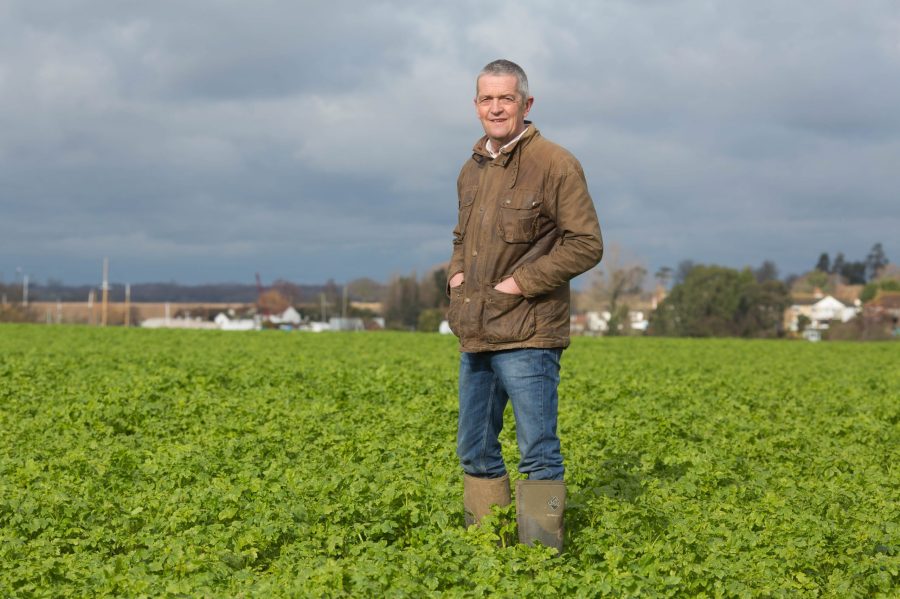By Guy Smith
For those of us that can remember when fertiliser arrived in the form of pallet loads of blue one hundred-weight plastic bags, here is another thought that marks time. Set-aside was introduced to UK arable farming exactly 30 years ago. For what was an undoubted first for many of us, fields that hadn’t been sown in the autumn of 1992 remained fallow in the spring of 1993 so that they could be recorded as such on our new IACS forms, which we sweated over for the first time.
To be exact, the set-aside concept was actually introduced by the EU earlier in 1988 but it had little uptake in the UK as it wasn’t a condition when applying for acreage payments. The maths in 1988 was pretty straight forward – with cereal and oilseed prices guaranteed through intervention-buying, production remained far more attractive than poorly compensated fallow.
But it was the introduction of ‘compulsory set-aside’ five years later that caused a lot of head scratching because it was only ‘compulsory’ if you wanted a fairly generous acreage payment. Again, the basic maths was reasonably straight-forward – if you wanted a payment of around £80 an acre over an area of your arable land then you had to take 15% of that area out of production.
The tricky bit was second guessing yields and market prices. Some farmers reckoned that while it was worth it for cereals, it wasn’t so clear cut for the usually more lucrative oilseed rape. As the years rolled by, the farm planning became more convoluted as the set-aside area rose to 20%, but ‘industrial crops’ were allowed on set-aside land as were 15m margins around headlands.
For many arable farmers, all this was a watershed moment. The concept of farming ‘the system’ became almost as important as growing good crops. It was a mind-set that was to become well rooted, even when set-aside itself was abandoned after 15 years – partly because it failed to do what it intended, that being to control production, and partly because global factors made the need to control production largely redundant.
I mention this 30-year-old history now because as I stare at the long list of ELMs options in the latest Defra missive, that same thought-process – honed over three decades – of trying to play the system is still alive and kicking. What makes this palava all the more brain-aching is that we have recently seen the wheat price double and halve in a breathtakingly brief period of time. Go back 30 years and crop prices were a good deal more stable. Hence the decision whether to apply for many of the ELMs options becomes a good deal more speculative as to whether they make good business sense or not.
The catchily titled option AB15 is a good case in point. It requires you to take land out of production for two years by growing legumes, thereby receiving an annual payment of £593 per hectare. When wheat is £300 a tonne this offer makes little sense but at £150 a tonne it becomes very attractive, especially if you can reduce your blackgrass burden in the process. The problem is that my guess is the wheat price will continue to swing like a pendulum between £150 and £300 over the next two years largely depending on the mood music in a certain bunker underneath the Kremlin in Moscow.
Suddenly I’m taken back to those Easter-time evenings in the early nineties, sweating over my newly commissioned maps of my fields while messing about with spreadsheets on the green-tinted screen of my newly acquired Apple IIE computer. I didn’t know it at the time, but life was so much simpler then.
The use of fallow and crop rotation in arable farming may be old as the hills, but under this new regime the rule book looks very different. As for the impact of all this on UK crop production, I struggle to see how it can be anything but negative. However, just as set-aside didn’t have much impact 30 years ago, maybe the ELMs of tomorrow can solve the conundrum of maintaining production while delivering other environmental goods.
This article was taken from the latest issue of CPM. For more articles like this, subscribe here.
Sign up for Crop Production Magazine’s FREE e-newsletter here.




